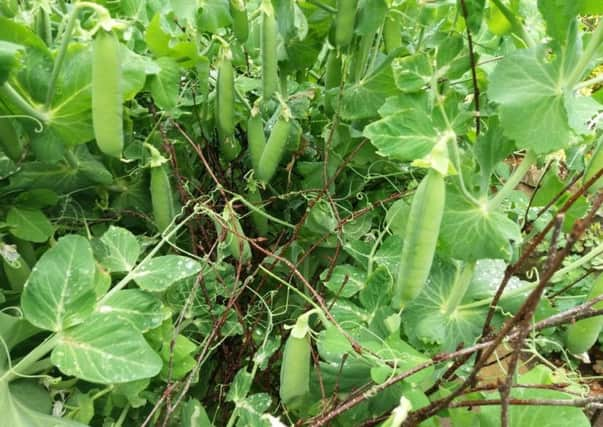Unseasonable weather hasn't hampered crops


Fruit and vegetables have performed well thus far, and colour continues in the mixed borders, so it’s business as usual with early harvesting, continuity of crops and general maintenance.
A raised vegetable bed devoted to peas, broad beans and early salad crops was the first to be cleared last week. The deliciously fresh produce it offered had been harvested over several weeks, some for the kitchen, much for the freezer.
Advertisement
Hide AdAdvertisement
Hide AdTime had come to remove all top growth and consign it to the composting facility whilst the roots remained to enrich the soil. The nitrogen-fixing nodules are too precious to waste.
Last year we grew a taller broad bean, Exhibition Long-pod, and although satisfactory, there was more growing space consumed and a need for strong supports, so we returned to old favourite, The Sutton. It produces shorter pods, but in abundance, and is a dwarf type, ideal for exposed sites.
Dwarf Kelvedon Wonder was the garden pea choice.
Now the bed is cleared, more vegetables can be planted for winter and beyond, and although it’s a tad late to plant Brussels sprouts and expect sufficient growth for Yuletide delivery, winter cabbages, leeks and broccoli can make it if they’re given an application of fish, blood and bone fertiliser, which is forked-in.
Onions grown from seed with winter storage in mind were showing signs of maturing as we entered August. Now some of the tops have started to bend over so it’s time to lift and lay them on a wire mesh cradle to dry off. Only sound bulbs will be stored under cover.
Advertisement
Hide AdAdvertisement
Hide AdThe simplest method involves sliding them into old tights, tying a knot between each so that one can be snipped free with scissors. This avoids the spread of rot or fungal disease associated with collective storage in nets.
Robinson’s Mammoth Improved, and D.T. Brown’s Exhibition have performed well for us this year.
Sutton’s Foremost potato, the ever-reliable first early, has cropped heavily in a rich organic soil this time. With just a short row left to harvest, another bed will soon be free for continuity planting.
Meanwhile, a bed of early Casablanca has not been touched and the foliage is no longer upright. It’s time to cut it all away and dig the crop. Leaving it in the ground any longer would be an open invitation to slug damage. This will free up another bed ready for succulent spring cabbage plants.
Advertisement
Hide AdAdvertisement
Hide AdMusselburgh leeks raised from seed were planted out in groups mid-May. These have made good growth and there’s still time to separate them, trim the foliage by half, and plant in rows to secure a much under-valued crop throughout winter.
Meanwhile, three runner bean varieties under trial – Tenderstar, Firestorm and Moonlight – are dripping with pods. We’ve no complaints about these when they’re picked young and regularly, but they’re not as stringless as the catalogue suggested in maturity.